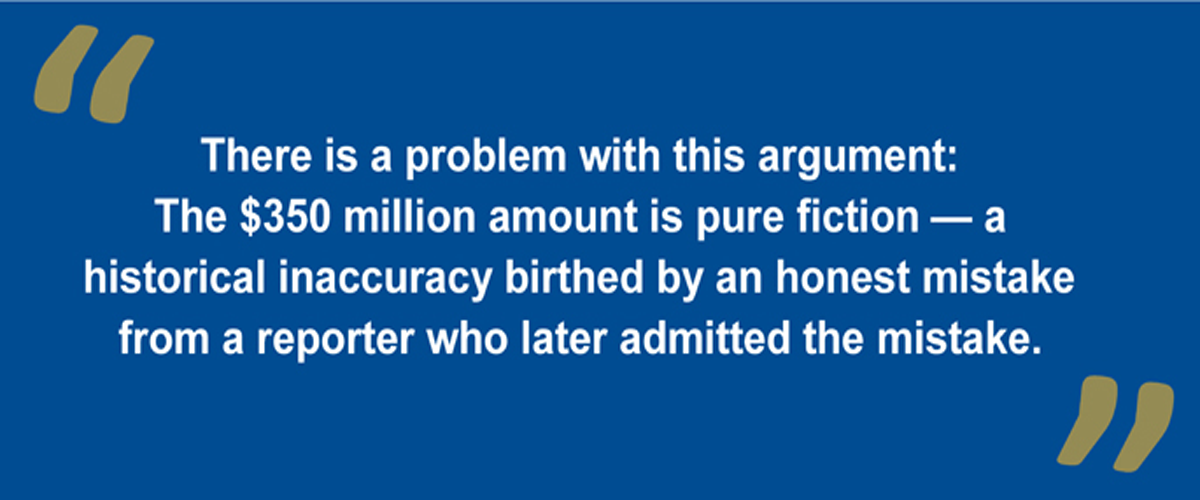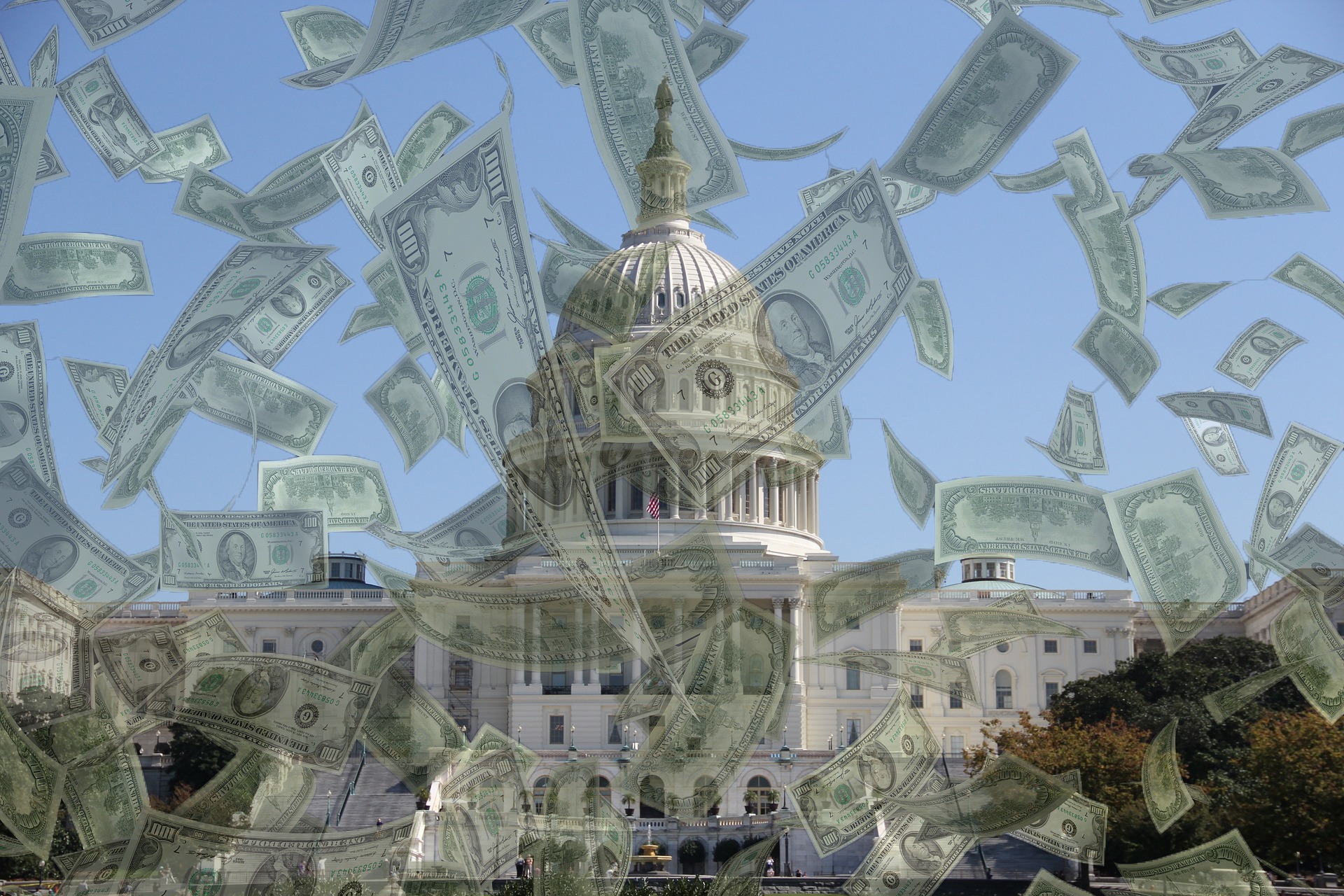Rockefeller Institute of Government President’s Note:
Every 20 years, New Yorkers have the chance to vote on whether to hold a constitutional convention (known as a ConCon). The next vote will be held this November. If the voters approve a convention, delegates will be elected in November 2018, and the convention will open in April 2019. As the vote fast approaches, the Rockefeller Institute will continue to provide New Yorkers with information in various forms: public education sessions, publications, and debates. Please follow on Twitter or sign up on our website for all the latest information.
Today’s piece by Peter Galie and Christopher Bopst continues a series of pieces between pro and anti-ConCon experts. We hope the dialogue provides insight to help inform voters come November.
Part III: Money Worth Spending: A Response to the Argument That a Constitutional Convention Would Cost Too Much (Read Part 1 and Part 2)
In 1967, the constitutional convention cost $47 million. The estimate today, if you move it forward, it would be close to $350 million, with no guaranteed results.
— John J. Flanagan, Temporary President of New York State Senate[1]
Senator Flanagan was not the originator of the $300 million-plus figure for a constitutional convention, nor will he be the last to use it. Opponents of a constitutional convention, such as former Assembly Member Jerry Kremer and Anthony Figliola at the lobbying firm Empire Government Strategies, have incorporated that number in their anticonvention literature.[2] Like manna from Heaven for convention opponents, this figure is high enough to scare both conservatives and liberals — after all, they argue, couldn’t the state find better ways to use close to $350 million?
There is a problem with this argument: The $350 million amount is pure fiction — a historical inaccuracy birthed by an honest mistake from a reporter who later admitted the mistake.
A review of the state comptroller’s reports from 1967 to 1971 show that the total amount spent for the constitutional convention and its preparatory commission was $7,580,885 (much less than the $10 million appropriated by the legislature for the convention)[3], which translates to $55,425,833 in 2017 dollars.[4] These amounts approximate those used in recent literature by the Civil Service Employees Association (CSEA), no friend of a constitutional convention, who pegged the cost of the 1967 convention alone as $6.5 million, or $46 million in 2015 dollars.[5]
Neither of the above amounts includes long-term actuarial costs, such as pension credits for delegates. Frank Mauro of the Fiscal Policy Institute prepared an estimate before the 1997 vote that included these costs. Mr. Mauro estimated the total cost of a convention in 1999 that finished its work in one year (as all but one convention have) and that would have low printing costs and minimal public education at $50.1 million (or $73.6 million in 2017 dollars).[6]
Nobody who has carefully researched this issue has come up with a number anywhere close to $350 million. So where did it come from?
In December 2015, a media boot camp was held in which several state constitutional scholars (in the interest of full disclosure, both authors of this piece attended and presented) spoke with the media about the constitutional convention process. At that time, political scientist Gerald Benjamin, an expert on New York State government, identified the cost of the 1967 convention in 2015 dollars as $47 million. Casey Seiler, a reporter for the Albany Times Union, identified the $47 million as the cost of the 1967 convention, not the inflated cost of a convention in current dollars. This inadvertent error was then multiplied by convention opponents who inflated the $47 million figure from 1967 dollars to current dollars, resulting in the $350 million amount. Mr. Seiler wrote an explanation of how this happened in a February 2017 article, in which he concluded: “So if you hear anyone throw out [the $350 million] number, tell them it’s bunk — and tell them I said so.”[7]

Despite Mr. Seiler’s best efforts to correct the record, convention opponents trumpet the $350 million number unabashedly, seeming unfazed by the fact that it is no truer than Donald Trump’s claims about his inaugural crowds. It bears repeating, however: The $350 million number is patently false. Depending on the study being used, the best estimates are that a 2019 convention would cost somewhere between $50 million and $75 million.[8]
The Question Becomes: How Much IS Too Much?
The cost of any endeavor, as such, is not the decisive factor. Any cost of a convention, no matter how small, would be too great if there were little likelihood of a positive return. If we have reason to believe that the convention would accomplish real reforms, the $50 million figure — and even the $75 million figure — would be “a drop in the bucket.” This is especially true when we consider that we spend over $1 million per legislator (so more than $213 million total) each legislative session, and that includes dubious expenses like the money spent to cover the legal defenses of legislators accused of sexual harassment, charged with submitting travel expenses for no-show travel, and stipends that certain chosen legislators receive for chairing committees they did not actually chair.
Companies often spend significant amounts of money to clean up their operations. When Greyhound fell prey to lower airline costs in the wake of that industry’s deregulation, it upgraded its service and equipment and spent over $110 million (close to $217 million in 2017 dollars) to move and improve depots to get itself back in the running.[8] After realizing that customer dissatisfaction was costing it sales, Walmart, notoriously known for its cost-cutting, built 200 training centers for employees looking to rise into management and raised pay for both managerial and nonmanagerial employees — reforms that cost the company an estimated $2.7 billion, but reversed the tide of declining sales.[9] Money well spent in both cases!
The taxpayers of this state spent over $45 million to clean the facade of the Capitol building. That cleaning did not improve government operations or the output of the state legislature. It did not enable the government to operate more efficiently or effectively. We did it because the character and condition of the building in which state governance takes place reflects the pride and commitment we have in our government. Do we owe our founding document any less?
A number of studies of New York’s byzantine court system have estimated that merging and streamlining that system would save the state, litigants, businesses, and municipalities over $500 million annually — $50 million of that cost being to the state itself. If the convention cost $50 million and delivers court reform, the state would recoup that cost in one year (not to mention the savings realized by the other affected individuals and entities). And that’s just for starters. Convention reforms would bring savings in other areas as well.
Spending $50 million (or even $75 million) on a convention, if that is what it takes to restructure and reform New York’s $163 billion-a-year state government, is a bargain. Put another way, it is approximately three hundredths of 1 percent of the state’s budget.
Annual elections have costs. Participating in democracy has costs. But the ability for people to have an active voice in how they are governed independent of a legislature that has been unwilling or unable to meaningfully confront the structural problems facing the state is an investment worth making.
Endnotes
[1] John J. Flanagan, quoted in Bill Mahoney, “How the cost of a convention became urban legend,” Politico, February 9, 2017, http://www.politico.com/states/new-york/albany/story/2017/02/how-an-implausible-cost-estimate-for-a-constitutional-convention-spread-109467.
[2] Arthur “Jerry” Kremer, quoted in Matthew Hamilton, “Analysis: Holding a constitutional convention is ‘nothing but a con,’” Times Union Capitol Confidential Blog, June 23, 2016, http://blog.timesunion.com/capitol/archives/250781/analysis-holding-a-constitutional-convention-is-nothing-but-a-con/; Anthony Figliola, “Another Voice: Constitutional convention is nothing but a con,” Buffalo News, January 20, 2017, http://buffalonews.com/2017/01/20/another-voice-constitutional-convention-nothing-con/.
[3] The comptroller’s reports did not differentiate between costs for the convention and costs for the preparatory commission, so they are included together. The appropriation for the preparatory commission was $800,000.00. In the event the full appropriation for the commission was spent during Fiscal Years 1967 and 1968, the total amount spent for the convention would have been $6,506,569, which translates to $49,449,879 in 2017 dollars.
[4] Conversion amounts were done using the website http://www.in2013dollars.com/. Conversion amounts were rounded to the nearest dollar. Because the comptroller’s reports use a fiscal year that ends on March 31, the conversion date used was for the calendar year before the fiscal year end (i.e., Fiscal Year End March 31, 1967, dollars were converted using year 1966 since nine months of the fiscal year were in 1966).
[5] CSEA Legislative & Political Action Department, “New York State Constitutional Convention?: Here’s what you should know,” n.d., https://cseany.org/wp-content/uploads/2015/10/con-con-flier.pdf.
[6] Frank Mauro, “How Much Would a 1999 Constitutional Convention Cost?,” n.d., on file with the authors.
[7] Casey Seiler, “Only off by $300 million,” Times Union, February 11, 2017, http://www.timesunion.com/tuplus-opinion/article/Only-off-by-300-million-10926419.php.
[8] These amounts are for the convention only. They do not include any amount for a preparatory commission.
[9] Kenneth Labich, et al., “The Year’s 25 Most Fascinating Business People,” Fortune, January 1, 1990, http://archive.fortune.com/magazines/fortune/fortune_archive/1990/01/01/72929/index.htm.

